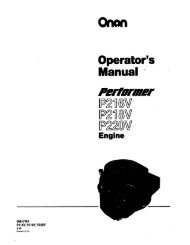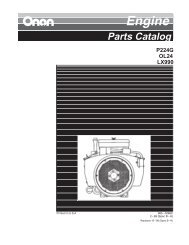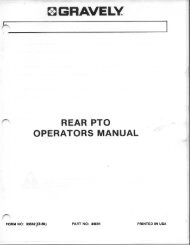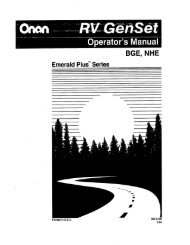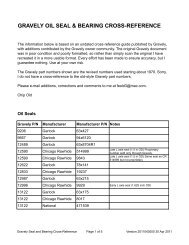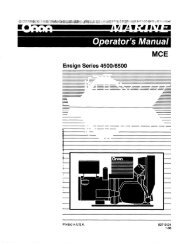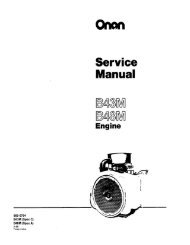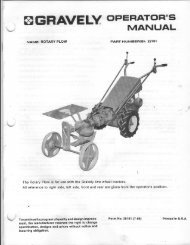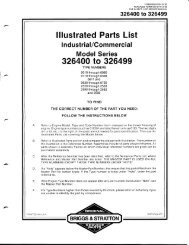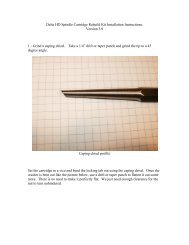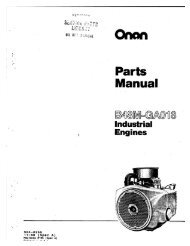272144 Vanguard Twin Cylinder OHV BRIGGS & STRATTON.pdf
272144 Vanguard Twin Cylinder OHV BRIGGS & STRATTON.pdf
272144 Vanguard Twin Cylinder OHV BRIGGS & STRATTON.pdf
Create successful ePaper yourself
Turn your PDF publications into a flip-book with our unique Google optimized e-Paper software.
GASEOUS FUELED ENGINES<br />
TROUBLESHOOTING GUIDE<br />
Symptom Potential Cause Action<br />
Engine does not accelerate from<br />
low speed or high speed or run<br />
smoothly when loaded.<br />
Plugged vent ports on the regulator.<br />
Less than 11 inches of water<br />
pressure at the inlet of the<br />
secondary regulator.<br />
More than 14 inches of water<br />
pressure at the inlet of the<br />
secondary regulator under full load.<br />
Plugged fuel filter.<br />
Kinked or obstructed fuel hose.<br />
No or low fuel in tank.<br />
Propane tank is too small.<br />
Fuel transfer solenoid in the wrong<br />
position.<br />
Carburetor not adjusted properly<br />
(natural gas only).<br />
Air leak in the fuel line from<br />
secondary regulator to carburetor.<br />
Holes, tears or damaged diaphragm<br />
in secondary regulator.<br />
Debris on inlet needle of regulator.<br />
Remove plastic shipping plugs.<br />
Adjust the primary regulator output to 11<br />
inches of water pressure.<br />
If natural gas supply is lower than 11<br />
inches of water, a different secondary<br />
regulator may be required – consult OEM.<br />
Adjust the primary regulator to achieve 11<br />
inches of water pressure while under load.<br />
Note: If pressure at inlet of secondary<br />
regulator increases upon starting<br />
the engine, check primary<br />
regulator for holes or tears in<br />
the diaphragm or dirt on the<br />
inlet seat.<br />
Replace fuel filter.<br />
Remove the kink and/or replace the hose.<br />
Refuel the tank.<br />
Appropriately size the fuel tank for the<br />
engine horsepower and lowest ambient<br />
temperature.<br />
When the fuel solenoid is energized or if<br />
the main mixture adjustment screw is<br />
completely seated, the engine is<br />
configured for propane gas (mixture too<br />
lean for natural gas).<br />
If the fuel solenoid is not energized, the<br />
engine is configured for natural gas<br />
(mixture too rich with propane).<br />
Readjust the mixture needles on the<br />
carburetor.<br />
Tighten the clamps or replace the hose.<br />
Replace damaged part.<br />
Clean system of debris and add a fuel<br />
filter.<br />
Use liquid pipe sealant – do not use Teflon<br />
tape.<br />
61




